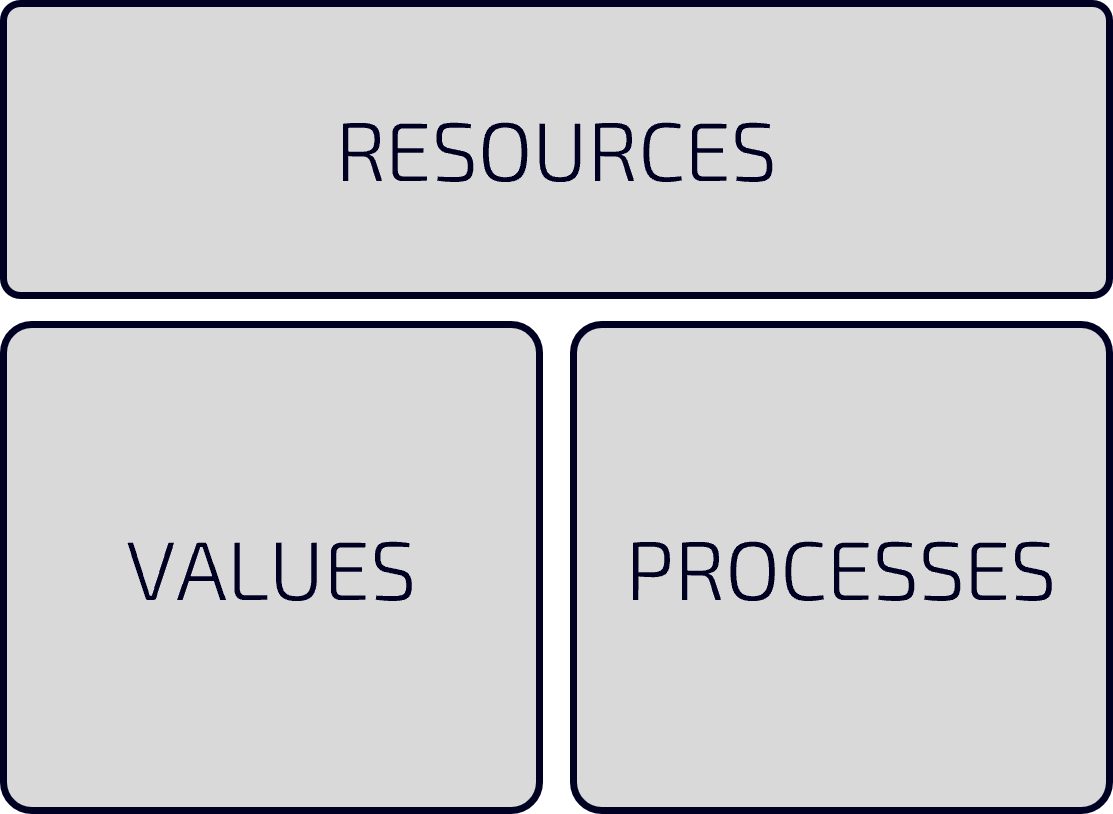

A Simple Framework For Successful Digital Transformation

How are you going to ensure a common understanding the impact of your Digital transformation?
According to Gartner, and many other digital transformation consultants, as many as 70% of all companies fail (or at least struggle to deliver the expected benefits) when they attempt digital transform. This is untrue and not backed out by the figures. However it is true that a significant number of transformations fail to realise the benefits they promise. This framework is one approach to improving the chances of delivering those results whether leading transformation programs that span the entire organisation, or are focused on transforming individual functions or porfolios.
For transformation to succeed you need to understand the attributes that affect your organisation, the factors that define success in digital transformation, and how they relate to each other.
The Attributes
First consider the three attributes that define the behaviour, philosophy, and the capability of an organisation to do its job:
- Resources: The people & assets that provide an organisations capabilities.
- Processes: The ways of work that allow the resources to be utilised to create value.
- Values: These are the factors and behaviours that define how processes and decisions are realised.
Your transformation planning & implementation needs to consider all 3 dimensions for every decision. Understanding the role of each and it’s impact on success is crucial.
The Success Factors
There are 6 factors that have to be con sidered care fullyfor every digital trans formation. By doing so business can en sure they realise the benefits of transfor mation.
They factors are:
- Vision: What is the big picture you are chasing?
- Ownership: Who ultimately owns the success of this transformation, and sponsors it?
- Culture: What is our existing culture, and how does it need tochange?
- Customers: What do your customers expect, and need you to deliver?
- Measures: What are the things we need to understand? What are the objectives/results that we are looking for?
- Technology: What technology is needed to enable your transformation?
By examining each in turn and understanding how theyrelate to the 3 attributes it is possible to understand how each can contribute to the success, or failure, of digital transformation.
Why is Strategy Not Mentioned?
The purpose of this document to help the reader understand the factors that affect digital transformation and provide a framework for understanding them.
This framework can be used to either create a strategy, or review an existing strategy.
Understanding The Framework

Attributes
The challenge facing the organisation is how to make sense of this shift, and what it means for every part of the organisation. We need a common structure and language for our people and functions to use to understand and evaluate what the transformation means for them.
The model proposed in "Meeting thechallenge of Disruptive Change" by Clayton M Christensen & Michael Overdorf is one of the simplest and most effective frameworks available to achieve this.
To understand if the organisation has the capabilities to transform we need to ask 3 questions.
- Does it have the right resources to transform?
- Does it have the right processes to transform?
- Are the right values in place for transformation?

Vision
A clear and concise vision that illustrates where theorganisation will be in the future. It should describe the big picture as it will be in 3-5yrs. It sets the direction in which the whole organisation will move.
It covers the whole transformation acting as the North Star, guiding individual projects and workstreams.

Ownership
Ownership is at the centre of digital transformation, and must come from the top of the organisation. No exceptions. It needs to be a Chief, not a subordinate. This generally means the CEO — Chief Executive Officer, however depending on the focus of the transformation it could be:
- CDO — Chief Digital Officer
- CIO — Chief Information Officer
- CTO — Chief Technology Officer
- CMO — Chief Marketing Officer

Culture
A cultural change plan needs to focus on:
- Why change is needed (Vision)
- Who will change (Resources)
- How things change (Processes)
- What will change (Values)
This will help drive the behavioural changes required to realise the expected
benefits of digital.

Customers
The customer needs to be placed at the heart of all decision-making.
Businesses need to generate value for customers to receive value from customers. The customer needs, wants and experience need to be incorporate in all digital work streams & plans.

Measures
An effective set of measures that capture
- Progress at the right granularity
- Performance of work streams
- Challenges to progress
Measures should be easy to capture, quantify, and report (automatically ideally). Measures should be captured as OKRs (Objectives & Key Results). KPIs (Key Performance indicators) and KQIs (Key Quality Indicators) can also be used.

Technology
Technology enables and uinderpins the transformation. A clear technology strategy that defines the need, selection and application of technology is required. It should cover:
- Architecture approach & preferences
- Customisation of technology solutions.
- Integration approach & requirements
Summary
Digital Transformation is more likely to succeed if we can:
- Get the CEO to drive the vision, and lead the change needed by example
- Ensure Ownership of the transformation is clear, and driven downwards through the organization.
- Ensure Change management is at the heart of our transformation
- Put our customer first in at every step
- Set the right objectives and measure the key results achieving those objectives
- Understand that Technology is an enabler of the driver of transformation
© 2025 Petes Work Space








